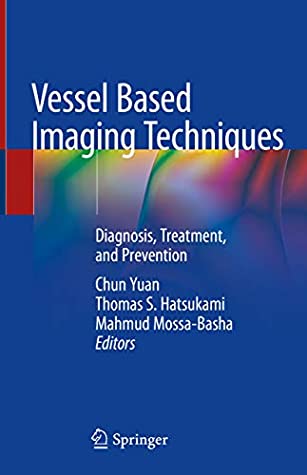Full Download Vessel Based Imaging Techniques: Diagnosis, Treatment, and Prevention - Chun Yuan file in ePub
Related searches:
Vessel Based Imaging Techniques - Diagnosis, Treatment, and
Vessel Based Imaging Techniques: Diagnosis, Treatment, and Prevention
Vessel Based Imaging Techniques Diagnosis, Treatment, and
Vessel Based Imaging Techniques : Diagnosis, Treatment, and
The Use and Pitfalls of Intracranial Vessel Wall Imaging: How We Do
Vessel size imaging (vsi) is a magnetic resonance imaging (mri) modality for evaluating the mean capillary caliber in the brain. This method is based on comparison of attenuation of gradient-echo (ge) and spin-echo (se) signals in the presence of paramagnetic contrast confined to the blood pool.
Vessel based imaging techniques� diagnosis, treatment, and prevention imaging in peripheral arterial disease� clinical and research applications cardiovascular oct imaging.
Imaging's evolution using early structural imaging techniques: ultrasound evaluation of arteries includes both imaging of vessel walls and plaque and magnetic resonance imaging (mri) is based on the principle of nuclear magne.
Apr 14, 2020 this book provides comprehensive information on new and existing vessel imaging techniques, with the intention of improving diagnosis,.
Vessel based imaging techniques: diagnosis, treatment, and prevention october 23, 2019 this book provides comprehensive information on new and existing vessel imaging techniques, with the intention of improving diagnosis, treatment, and prevention of vascular and related diseases.
Brain imaging techniques (neuroimaging) brain imaging (neuroimaging) was invented in the 1880s by angelo mosso, who devised a technique referenced as the “human circulation balance. ” this technique was able to assess how blood was redistributed throughout the brain as an individual experienced emotion and/or engaged in intellectual tasks.
Buy vessel based imaging techniques: diagnosis, treatment, and prevention: read kindle store reviews - amazon.
Editors: yuan, chun, hatsukami, thomas, mossa-basha, mahmud (eds.
Differences in these prevalence rates between neuroimaging and autopsy studies may be due to methods of plaque detection by these lumen-based imaging.
Download vessel based imaging techniques books now! available in pdf, epub, mobi format. This book provides comprehensive information on new and existing vessel imaging techniques, with the intention of improving diagnosis, treatment, and prevention of vascular and related diseases.
Angiography remains the clinical standard for coronary and peripheral vascular imaging to identify significant arterial narrowing and to guide both catheter-based and surgical interventions. Although angiography provides a highly useful picture of the vessel lumen, it offers only indirect information about the arterial wall.
Yock angiography remains the clinical standard for coronary and peripheral vascular imaging to identify significant arterial narrowing and to guide both catheter-based and surgical interventions.
Apr 9, 2020 in addition to any abnormality of blood vessel diameter, dark patches in the breast tissue due to an abnormality also become a basis for tumor.
Mr vessel wall imaging refers to mri techniques used to evaluate for disease within the walls of arteries, beyond the luminal abnormalities depicted on angiographic imaging. This can be used anywhere in the body but is particularly important intracranially in distinguishing between various causes of luminal stenosis such as intracranial.
Using these tools, we can detect if there is abnormal blood flow in an artery or blood vessel.
“this book is of high quality and provides information that is essential to clinicians who use vessel-based imaging. This book does a great job in bridging the gap between research in current and new imaging techniques and clinical application.
To develop evidence-based recommendations for the use of imaging modalities in primary large vessel vasculitis (lvv) including giant cell arteritis (gca) and takayasu arteritis (tak). European league against rheumatism (eular) standardised operating procedures were followed. A systematic literature review was conducted to retrieve data on the role of imaging modalities including ultrasound.
Intracranial arterial wall imaging methods are gaining increasing potential to impact state of the art and future development of intracranial vessel wall imaging. Our traditional understanding of intracranial large artery diseases.
Mar 19, 2021 mr vessel wall imaging, currently limited to use in tertiary academic is based on vasodilatory/autoregulatory mechanisms of the intracranial.
Request pdf vessel based imaging techniques diagnosis, treatment, and prevention: diagnosis, treatment, and prevention this book provides.
This is traditionally done by injecting a radio-opaque contrast agent into the blood vessel and imaging using x-ray based techniques such as fluoroscopy. The word itself comes from the greek words ἀγγεῖον angeion, vessel, and γράφειν graphein, to write or record.
Magnetic resonance angiography (mra) is a group of techniques based on magnetic resonance imaging (mri) to image blood vessels. Magnetic resonance angiography is used to generate images of arteries (and less commonly veins) in order to evaluate them for stenosis (abnormal narrowing), occlusions, aneurysms (vessel wall dilatations, at risk of rupture) or other abnormalities.
In this how i do it article, the authors will discuss the technical requirements and considerations for vessel wall image acquisition in general, describe their own vessel wall imaging protocol at 3 t and 7 t, show a step-by-step basic assessment of intracranial vessel wall imaging as performed at their institution–including commonly.
Jan 30, 2015 we classify the vascular imaging modalities into three major groups: nonoptical methods (x-ray, magnetic resonance, ultrasound, and positron.
Dec 20, 2017 identify the main advantages of intracranial vessel wall (vw) imaging over lumen -based methods.
Pprovides a multi-modality approach to vessel based imaging techniques/p paids in the diagnosis, treatment, and prevention of vascular and related diseases/p pwritten primarily by research driven clinicians, bridging the divide between new imaging research and clinical knowledge/p.
In recent years, vessel wall imaging has expanded greatly into other beds (such as the intracranial and peripheral arteries) and many of the techniques available for evaluation and diagnosis have only previously been published in research papers. This book bridges that gap for clinicians, applying cutting edge research to their everyday practice.

Post Your Comments: